Today there is so huge range of colors that even experienced floweries are lost and do not know what to purchase. Many remain faithful simple and understandable flowering plants of type Astra, velvetsev and daisies, others are constantly in search of original and beautiful flowers. It is to such a bright and awesome, applies targeting - a flower just with an incredible appearance.
Codoria on the flowerbed is just a queen, she is able to fall in love with even experienced gardeners who have seen many wonderful crops. Motion flowers similar to scallops or gentle bird feathers will decorate any plot, help create a composition without attracting additional elements. The cultivation of the sacrifice is not a completely difficult lesson, the main thing in time to pay attention to her and the plant will answer long and gorgeous blossom.
In this article, consider the features of the sacrifice, as well as the characteristics of popular varieties of this culture. We note the important moments of landing and care for sacrifice in the open soil.
Features and description of targeting
Code - a perennial or annual plant, which belongs to the amaranth family. Although there are many years of varieties and even shrubs, in Russia in the conditions of our climate it is possible to grow care as an annual plant - it does not withstand low temperatures. The natural area of \u200b\u200bthe habitat of the sacrifice is the territory of warm continents - North and South America, Asia, Africa. It was here that the first grades of this culture appeared, which later assumed European breeders as a basis for the removal of new types and varieties of targeted.
The generally accepted name of the sacrifice went from the Greek word "Kelos", which in translation denotes the "flaming, burning, flame". This is due to the appearance of the plant whose inflorescences resemble the real flames, especially in varieties with red colorful colors.
The culture plant can be grown as a room culture, it concerns predominantly combing sacrifice. Tall culture varieties perfectly look in the cut, they can be used to form bouquets.
Description of targeting:
- The targeting is a perennial or annual grassy plant, which is grown in the territory with a temperate climate as an annual.
- There are also shrub forms of targeting.
- The targeting has a well-developed root system, which is represented by the rod root and a large number of lateral roots, which all together reach the length of 20-25 cm.
- The stalk in the plant is a reprehensive and branched, height can reach about 30-100 cm. The color of the stem of a saturated green shade, often with a reddish tide.
- The leaves throughout the stalk are located in the next order. They represent one-piece and smooth egg-shaped leaf plates with a pointed end. The color of foliage can be green, motley and dark purple.
- Flowers in the sacrifice of small, rims, are assembled in cooled, blurred and scallonic inflorescences depending on the specific type of culture.
- The color of the sacrifice during flowering is simply affecting the imagination. It is bright yellow, red, pink, red-purple, red-purple, salmon shades, like flame languages \u200b\u200bburning on flower beds.
- After biting inflorescences on the plant, fruits appear, which are rounded small boxes. Inside these boxes contain seeds of targeted - small, black and shiny. Seeds retain the germination for 5 years.
- The targeting does not make low temperatures, so our winters are not suitable for it. But at winter, you can put a beautiful herbarium from the bright inflorescences of the sacrifice.
- This plant is widely used in folk medicine.
Variety of species and varieties of targeting
To date, there are about 60 sorting varieties that differ in the most different characteristics and colors of inflorescences. Three varieties of this culture were acquired in the largest popularity in Russia, which received their name in the form of inflorescences: Great, Pilish, Koloskaya. Two types belong to the sacrifice of silver. Consider in more detail the features of each type.
Great kingdom
- By nature, this is a perennial plant, but on our territory is used only as an annual.
- In the people, it is often possible to meet the name "Cocking Golley" because of the forms of inflorescences, which are very similar to the real comb.
- This is a herbaceous plant, which can be in height to reach 50-65 cm. However, in culture there are low-grade varieties of this type of targeting.
- Stem garden combustion stem with reddish tint.
- The entire stem is thick covered with sweet, regular, egg-shaped leaves.
- Depending on the specific variety, the leaves can different colors: green, burgundy, bronze, golden.
- The most real decoration of the embodiment is the original inflorescence like which is difficult to find in nature.
- Flowers are very small sized flowers, collected in fairly large and massive inflorescences. At the top edge of the inflorescence, there are several convolutions, which makes this flower look like a coil of a rooster. The diameter of the inflorescence can reach about 15 cm.
- This flower simply affects the imagination with its bright colors: red, scarlet, orange, purple-red, yellow.
- Flowerba with embodiment of the comb will be the perfect decoration of any site and during flowering will be attached to the views of passersby.
- Blossom starts in approximately June and lasts until October. Long flowering is a distinctive feature of culture.
Popular garbage sorts:
- The sort of combustion grade "impress". This is the most popular sorting variety, which prefer to grow gardeners of the middle strip of Russia. In height, the plant can reach about 30-40 cm. Differs in bright burgundy scallop inflorescences. The stalks are fully covered with dark purple leaves of ovoid shape.
- The sort of targeting "Imperialis". It belongs to the dwarf species that are just 25 cm in height. This grade embedder is also very popular among gardeners. Stalver burgundy plants are completely covered with purple leaves, which are completely covered with streaks. At the top of the stem is a bright inflorescence of a purple shade.
- The sort of combustion grade "Atropurpur". Also, the dwarf variety, which in height can reach about 25-30 cm. Stem grade green and pink shade, on the top of which is a beautiful and large compliance of purple-red color. The stem is covered with light green leaves of ovoid shape with pink streaks.
- Grade "Tall Mixed". This is a grace of comb's sacrifice. Plants in height reach approximately 75 cm. You can get a flowerub with the most different colors of inflorescences.
- Grade Great Code "Nana Mixed". A variety of colors with stems of 30-35 cm long. Inflorescences are different in different colors.
Corosion periry
- It is also a form of silver sacrifice, it is the name of the targeted by the pitcher, is popular among the gardeners.
- The natural habitat is the territory of the tropics.
- A sufficiently tall plant, which in height can reach from 30 cm to 100 cm, which can be used in different garden compositions.
- Stems of green, fully covered with light green, pink or aliemi leaves of the oblong shape.
- If you put a few color targeted colors, you will get a beautiful small bush, the third part of which is a lush inflorescence.
- Flowers of small size are assembled into large inflorescences that can have a different coloring: red, pink, burgundy, orange, yellow.
- Most often in stores for sale as a variety of species with the most different shades.
- The codes of the punch is characterized by the duration of flowering, can please bright and beautiful inflorescences to the most frost.
Popular targets peristicide:
- Exchange variety "Flamingo Feather". These are medium-sized plants that are in height can reach about 50 cm. They differ in the beautiful inflorescences of a gentle-pink shade, which resemble the color of the flaming birds.
- Grade "Pampaas Plum". Also, the colors of medium height growing about 45-50 cm. During flowering, it is pleasing to beautiful yellow and red inflorescences.
- Ceases grade Cellis "Forest Fire". High colors with bright red inflorescences.
- Codicia variety Cemers Kimono Mixed. This is a mixture of colors of the most different shade. Calls to the most dwarf varieties of this plant - in the height of flowers can reach only 10 cm.
- Grade "Golden Flitz". Beautiful sorting grade up to 80 cm high. Differs in bright inflorescences of orange-golden color.
- Ceased grade peristole "Foyerfeder". The dwarf variety of targeted, the plants of which can reach in a height of approximately 35 cm. Flower with bright red inflorescences.
Kickosiaoid targeting
- This type of targeting is less popular among gardeners.
- It is a flower of different height, which can be from 30 cm to 120 cm.
- The inflorescences of this type of sacrifice resemble fluffy spikelets of wheat, which can have a different shade: white, yellow, red, burgundy, purple.
- The dark green stem is completely covered with subtle oblong leaves.
- At the top of the stems there is a corpid inflorescence, very fluffy and gentle.
- This type of kneading is famous for its healing properties.
Growing seedlings from seeds - step-by-step instructions
Corosions in our territories are grown as an annual plant, so the seed reproduction is considered the only way to breed this culture. In warmer countries, it is also possible to reproduce the sketching of grinding, but in this case the plant loses its decorativeness. Let us consider in more detail the process of growing seedlings of the sacrifice.
- The cultivation of the sacrifice of seeds is quite simple, but a long process.
- First of all, it is necessary to purchase landing material. You can buy seeds in specialized garden centers. If the beauty-targeting is already growing in your site, you can wait for the flow of inflorescences. After that, make one, take a sheet of paper, over which you need to shake the inflorescence. Seeds are raised without problems.
- Code seeds are covered with a very dense shell, which must be softened so that they proceed.
- Starting the preparation of landing material is needed in about March-April. To do this, take the tank and fill it with a solution of epine and zircon (you need 1 drop in a glass of water). Place seeds in this solution and wait 5-6 hours.
- It must be remembered that the seeds need to be placed immediately from the solution to the ground. Therefore, containers with soil mixture are prepared in advance.
- For the cultivation of seedlings of the sacrifice, sand, humid and vermiculite must be mixed. This soil mixture must be placed in suitable containers.
- Seeds are sown on the surface at a distance of about 3 cm from each other. Flip the soil is not necessary.
- The soil must be sprayed from the spray and close the film or glass container.
- Further care lies in good lighting, ventilation, watering. It is necessary to ventilate once a day for about 1-1.5 hours. Watering is best done with a pulverizer in the morning. Try to avoid evening irrigation, as the plant can get sick.
- The first shoots will appear in a week, at this time it is important to provide additional highlighting seedlings.
- Seeders are divened twice. The first time after the appearance of 2-3 leaves into separate cups or in a large container, the cosquia is already planted for the second time.
Preparatory stages before landing targeted in open ground
Cosal is a tropical guest that loves heat and humidity, so it is best to have the right and thorough preparatory work. It should be in choosing and acquiring a high-quality and healthy planting material, as well as in the selection of an ideal place for landing for targeting.
Stage 1. Selecting varieties and planting material
- First of all, it is necessary to purchase landing material for sacrifice, which is perfect for your garden.
- The choice of a particular variety will depend on the garden composition you are planned. Higher sorting varieties are suitable for the lower edge of the flower beds or for its central part. Dwarf varieties will perfectly fit into the framing of flower beds and flower beds.
- Take the landing material of the zoned varieties that are adapted to the climatic conditions of your area.
- You can purchase seeds and raise seedlings yourself, but you can buy finished seedlings of sodes.
- Buying seedlings are best in specialized garden centers or nurseries, which are professionally engaged in breeding plants. It is here that you can choose the highest quality and suitable garden material.
- Before buying, be sure to check out the seedlings. It should be in pots and have a healthy fresh species, without signs of disease and pests.
Stage 2. Selecting the place for landing
- Code prefers to grow at open solar sections.
- The shady space is not quite suitable for this tropical culture, since this plant will not be able to fully reveal the beauty of its bright inflorescences.
- The selected place should also be protected from strong wind and drafts, as this can break tall plants.
- The choice of place for landing will depend primarily from the garden composition with you. Come up with an interesting floral flower bed and pick up a variety of sacrifice of different heights for it.
- The plant does not tolerate water stagnation, so the site should be on a small elevation.
Stage 3. Choice and soil preparation for sacrifice
- Code prefers to grow on loose and light soils with good drainage. Therefore, before planting in the soil, it is recommended to add a little large sand or pour a layer of drainage to the bottom of the landing well.
- It is preferable to select for planting this culture of soil with an acidic reaction. If there is no such garden in your garden, add some lime to the ground before planting.
- It is not recommended in the soil during the preparation to be vacated with the body, since the targeting does not make this kind of fertilizer.
- Before boarding, carefully disappear your selected area, burst it and scatter it.
Gospery seedlings technology in open ground
- Place the prepared seedlings of the sacrifice in open soil is only necessary after complete heating of soil and air.
- First of all, it is necessary to explode the landing site and make planting wells on it, the size of which will depend on the size of the earth coma on the roots of the plant.
- It is important to take into account the distance between individual seedlings, which is also envy of the sort of sorting. Approximately 15 cm can be retreated between dwarf shapes, for more tallest varieties you need a distance of 25-35 cm.
- Code seedlings has a very tender and vane root system, so it is necessary to transplant it very carefully. In this case, it is best to use the handling method.
- On the bottom of each well, you can pour out a small layer of drainage to eliminate cases of stressing water from the roots. As a drainage, gravel, crumples or minor stones can be used.
- Place the seedlings of the sacrifice in the landing wells and carefully pour the soil mixture, sealing the soil with your hands.
- After landing, it is recommended to pour young plants.
Curmodity Growing Agrotechnics: Secrets and Nuances of Care
Care for the minimum care is precisely for such unpretentiousness this plant is valued by gardeners. To organize, it is important to know some features that are peculiar to this culture: the targeting does not like excessively moistened soil and even small frosts are terrible.
- Watering. Young cultivation plants need frequent and abundant irrigation. Watering is recommended in the morning. The frequency of watering increases during drought. However, watches not to pour the plant. It is necessary to maintain the wet state of the soil, but without stagnation in the roots, which can destructively affect colors.
- Swimming. Periodically, after irrigation, it is recommended to loosen the soil around the plants. This is necessary to provide access to the oxygen to the roots. It is also important to regularly remove weeds that can slow down the growth and development of targeting.
- Feeding It reacts well this plant for feeding, which must be carried out every month. It is best to use fertilizers on a mineral basis, it is not recommended to make a body, as the purposeful of her loves her.
- Fighting diseases and pests. Very often, at a young age, the targeting is amazed by a black leg due to irregular watering mode. When this disease is detected, shook the soil and sprinkle with it with charcoal, and also stop watering for a while. Sometimes the plant harms the fault, to combat the liquid soap solution with sunflower oil.
- Code - collecting seeds. If you want and the next year to rejoice in the beauty of the sacrifice, you can independently assemble her seeds. To do this, cut a few colors and put them in a dry vase. When the flowers are dried, put a sheet of paper on the table and carefully shake inflorescences - the seeds are easily poured.
- Corosions in winter. In our climate, targeted is grown as an annual plant. However, few people know that this plant can be used for floristics. Their bright inflorescences are very beautiful herbarium, which can be used at home. To put the herbarium, cut a few beautiful inflorescences, tie them into a bundle and hang out in a dark well ventilated room. After a while you can put a bouquet in the vase.
Use of targeting in landscape design
Cosal is a very bright and decorative plant, with which you can create incredible garden compositions. This culture is pleasure to use gardeners and landscape designers.
- Code can be grown on flower beds along with other blooming plants, however it is important to select grades in height and in color of inflorescences.
- It looks beautifully this plant in the landings along the garden tracks or borders.
- Very often you can meet targeting in tubs or garden pots, originally placed on the site.
- Code is used to create very unusual garden compositions.
Photo of targeted
Tropical targeting flower will become an excellent solution for decorating your site. He will be able to diversify the already familiar views of the flower beds and flower beds, add bright flame paints to a common palette. In addition, landing and care for this culture can be even a novice gardener.

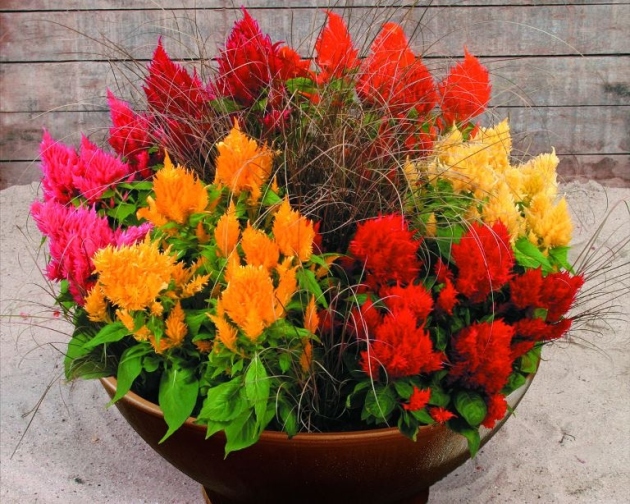
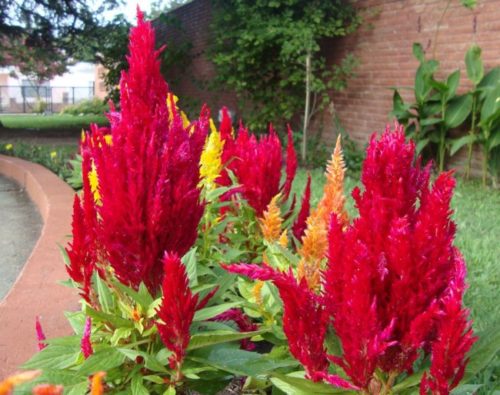
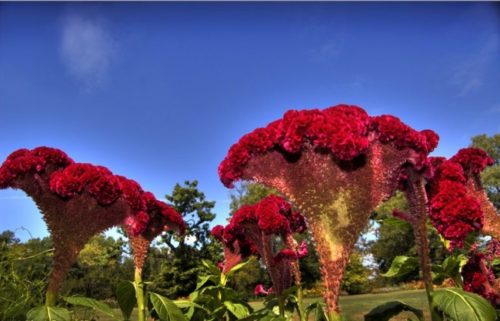
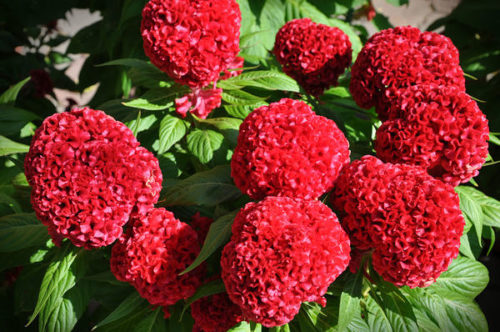
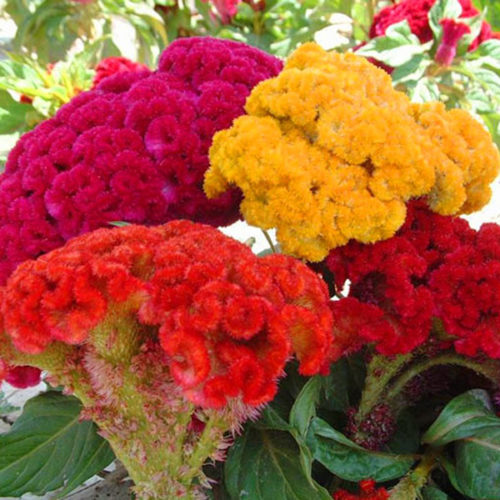

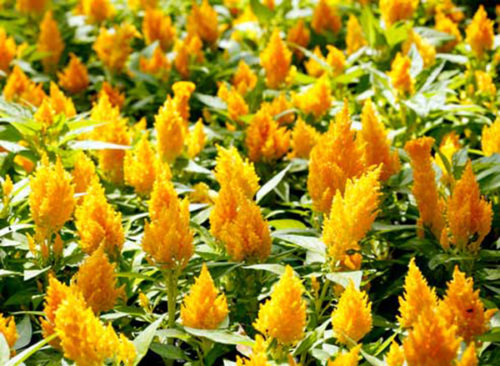
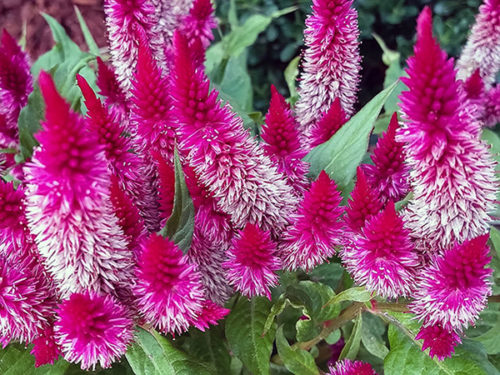
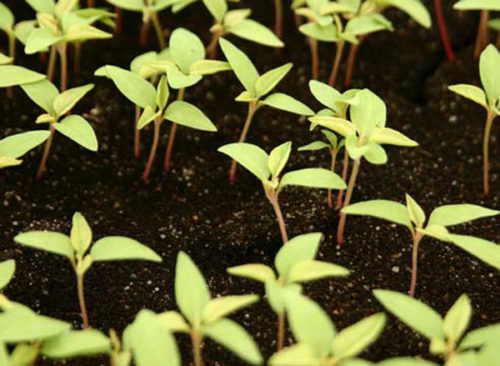
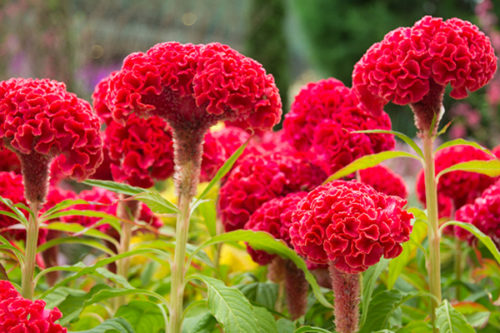
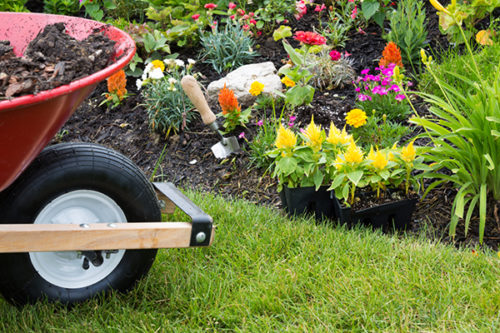
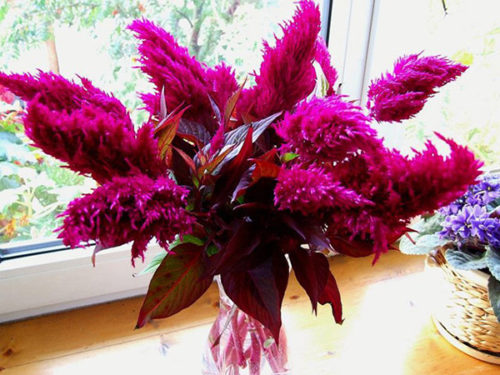
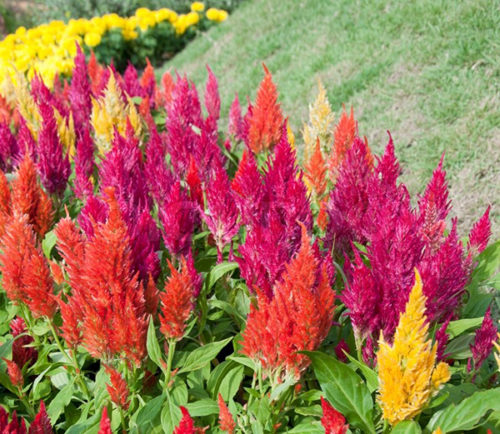
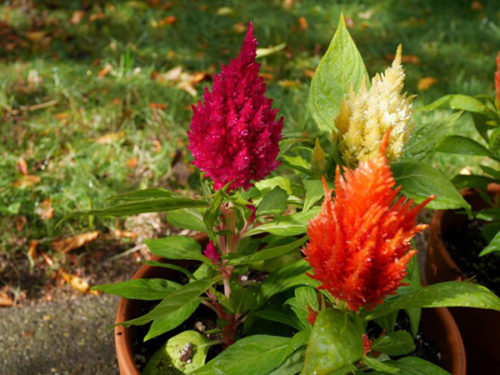
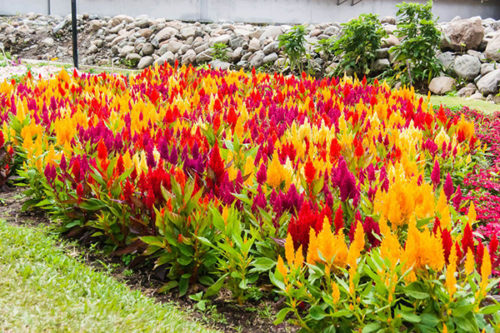
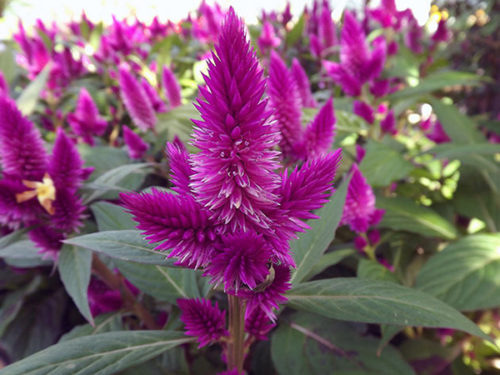
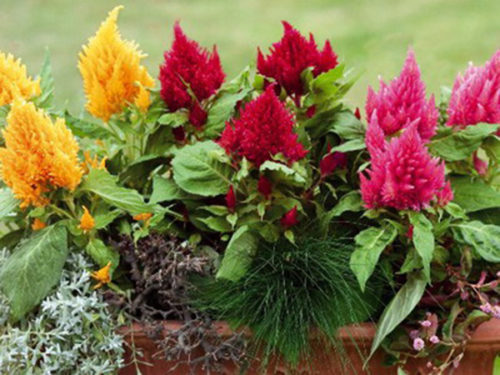
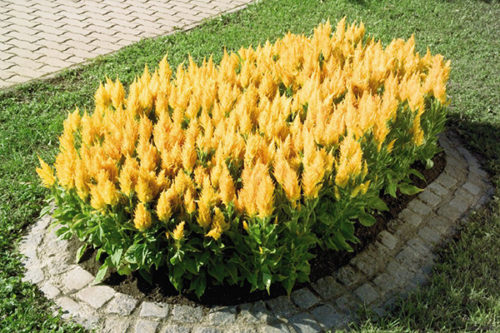
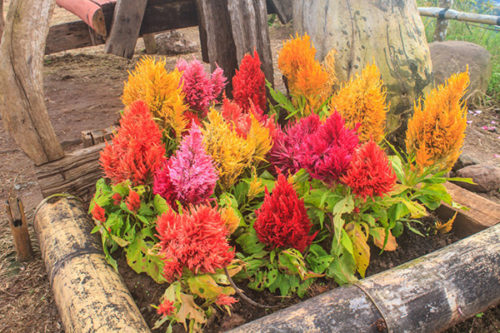












 Start a discussion ...
Start a discussion ...